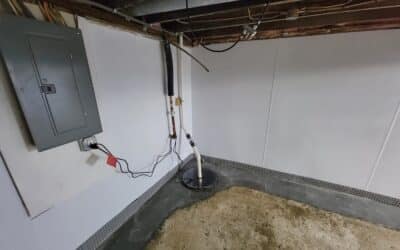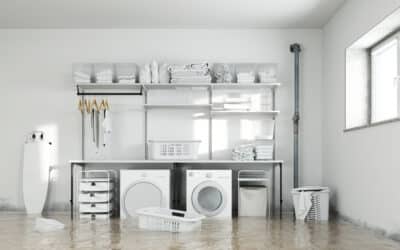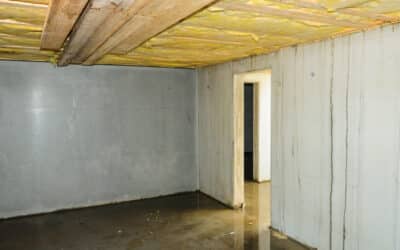A crawl space provides access to essential utilities, making it a valuable area in your home. However, when groundwater seepage, heavy rain, condensation, or plumbing leaks take over, crawl spaces can quickly lose their purpose and turn into a source of major concerns.
Crawl space waterproofing, then, is a solution you must invest in. Let’s explore what it is, when you need it, and how to do it right.
Defining Crawl Space Waterproofing
Crawl space waterproofing combines techniques to avert moisture from penetrating and accumulating in the crawl space. It can involve sealing, drainage, insulation, and humidity control methods, both inside and outside the foundation.
Waterproofing your crawl space is vital because unchecked moisture causes structural damage and creates the perfect environment for mold, mildew, and pests. Moreover, energy inefficiency becomes an issue, with your HVAC system struggling to maintain your desired indoor temperature.
Signs You Need to Waterproof Your Crawl Space
Many homeowners do not realize they have a problem until it is too late. Here are some clear indicators that your crawl space demands waterproofing.
Presence of Water
Whether standing water, damp surfaces, water stains, or efflorescence, the presence of water in your crawl space is a sure sign. And where there is moisture, there is likely rust or corrosion on metal components. You may also notice your paint or wallpaper peeling and crawling insects like ants and termites, which are naturally drawn to moist conditions.
Mold or Mildew
While mold and mildew also result from moisture, they deserve special attention due to their significant consequences. Mold growth leads to musty, unpleasant odors that often travel through the ventilation system and into your living space. When inhaled, mold spores trigger allergic reactions and respiratory issues.
Cracking and Bowing of Walls or Floors
Lastly, visible cracks in the walls or floors tell you that water is making its way into your crawl space. These cracks will expand over time, letting in more moisture and exacerbating the abovementioned problems. Another symptom of long-term water intrusion and foundation stress is bowing or warping, which compromises the overall safety of your home.
The Crawl Space Waterproofing Process
Crawl space waterproofing is not something you rush or do halfway. It requires a careful, methodical approach to guarantee effective and long-lasting results. What are all the steps you must take?
Step 1: Initial Inspection
Assess your crawl space thoroughly to locate the source and extent of moisture intrusion. Closely examine the walls, floor, ventilation openings, insulation, plumbing, and drainage systems. With a detailed inspection, you can customize your waterproofing strategy.
Step 2: Moisture Level Measurement
Measure the humidity levels throughout the crawl space using a moisture meter. Ideally, the relative humidity should be under 60%. If you get higher readings, proceed with the necessary waterproofing interventions.
Step 3: Repairs and Replacements
Fix any damaged components in your crawl space. Seal foundation cracks, repair leaking pipes, and replace worn-out insulation or damaged vapor barriers. All restorations will support your waterproofing system.
Step 4: Exterior Waterproofing
Since moisture in your crawl space comes from outside, exterior waterproofing is critical. Key components of this step include the following:
- Grading and Landscaping: Ensure the soil slopes away from the foundation. You can also use landscaping solutions, such as French drains, that divert water from the structure.
- Gutters and Downspouts: Move rainwater by properly installing gutters and downspouts. Downspouts should extend at least five feet from your house.
- Drainage Systems: Channel water away from the base through a perimeter drainage system with a trench and perforated piping, surrounded by gravel and geotextile fabric.
- Membranes and Coatings: Apply waterproof barriers to the exterior of your foundation walls using rubberized membranes, asphalt coatings, or liquid sealants.
Step 5: Interior Waterproofing
As crucial as exterior protection, interior waterproofing reinforces your defenses from within. Here are adequate measures:
- Vapor Barriers: Install a heavy-duty plastic sheet over the floor and walls of your crawl space to block ground moisture.
- Drainage Systems: Place perforated pipes along the interior perimeter to collect water and direct it to a sump pump.
- Sump Pumps: Actively remove water with this device. Equip it with a reliable power source, preferably with battery backup in case of outages.
- Dehumidifiers: Specialized crawl space dehumidifiers help maintain optimal humidity levels and lower the risk of mold and condensation buildup.
Step 6: Enhancements
Lastly, maximize the benefits of waterproofing by improving insulation. Crawl space encapsulation is also an option, sealing the entire area with a vapor barrier and turning it into an environment that is easier to preserve.
Final Thoughts
Crawl space waterproofing is an investment in structural integrity, energy efficiency, and indoor air quality. If you have noticed any signs of water intrusion, now is the time to take action.
At Summit Basement Company, a team of professionals delivers proven experience and reliable systems that keep crawl spaces dry, secure, and worry-free. Call (330) 217-2246 or contact us online for a free estimate! Let our waterproofing experts protect you and your home.


